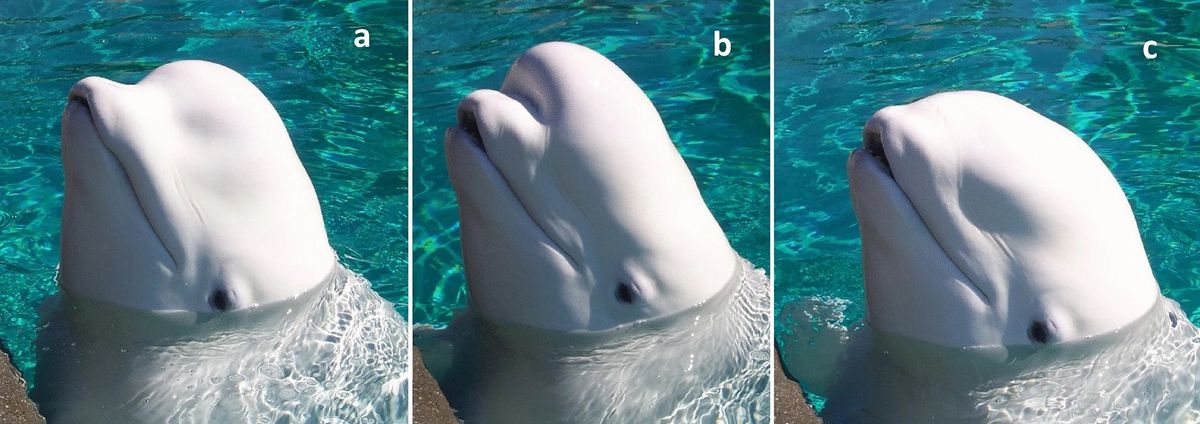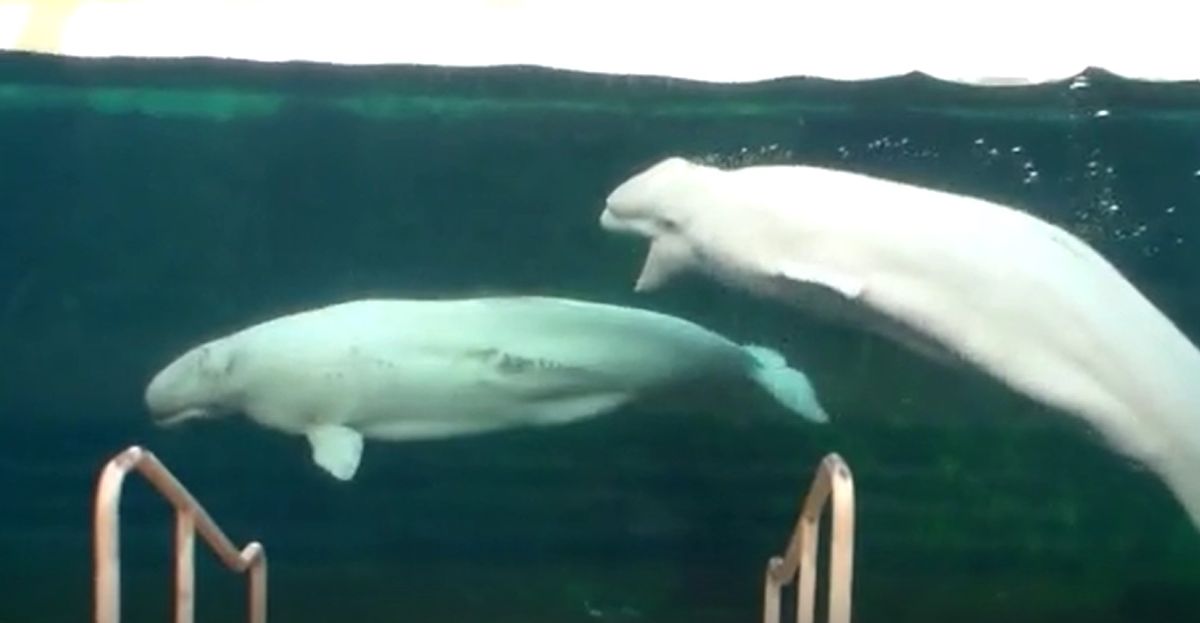Observe how belugas alter the shape of their heads to communicate
Follow us on Google News (click on ☆)
Unlike other mammals capable of expressing their emotions through facial expressions, cetaceans, whose thick skin masks muscle movements, seemed until now to lack this ability. A recent study published in the journal Animal Cognition, however, has revealed that belugas (Delphinapterus leucas) use the shape of their melon, a fatty prominence on their forehead, to interact. This discovery marks a turning point in understanding communication in these marine mammals.

A trained beluga demonstrating the ability to voluntary change the shape of the melon from a relaxed position (a), to rostral extension (b), and to posterior retraction (c).
The changes in head shape are primarily seen during interactions among belugas, with five different shapes identified.
Credit: Richard et al/Animal Cognition 2024
Researchers observed belugas modifying their melon into five different configurations: flat, bulged, pressed, pushed, and shaken. These transformations are mostly noted during varied social exchanges, ranging from play to courtship, and even in more conflictual contexts. Aimed primarily at their counterparts, these modifications indicate a potential for intentional communication.
Males, in particular, are the ones who modify their melon the most, mainly within the context of reproduction, but also during play among themselves or confrontations. The frequency and variety of shapes adopted suggest a rich palette of visual signals within their interactions.
The exact implications of these expressions and whether they are potentially intentional or reflex remain to be studied. Nonetheless, this research offers a fascinating insight into the visual communication abilities of belugas, adding a new dimension to our understanding of their complex social interactions.

The "pressed" shape, illustrated here, occurs more frequently during sociosexual play and courtship among males.
Credit: Richard et al/Animal Cognition 2024
These discoveries could not only shed light on the specific behaviors of belugas but also on communication mechanisms among cetaceans in general. The study of visual signals, coupled with the knowledge of their vocal communication, promises to reveal even more about the social life of these intelligent marine mammals.